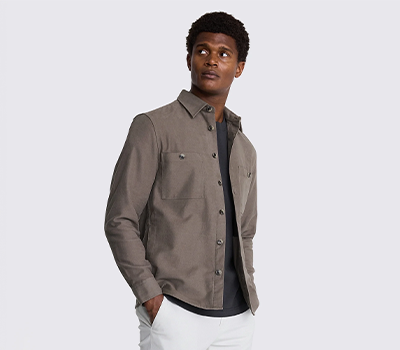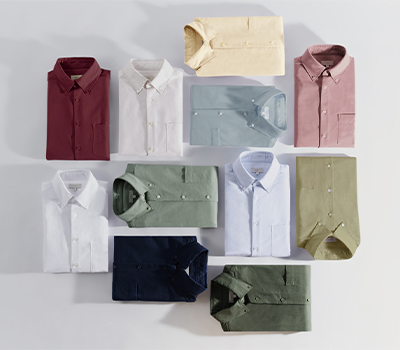The devil’s in the detail.

KNOW YOUR WAY AROUND A TAILORED JACKET
THE DEVIL’S IN THE DETAIL
• WORDS: A. FOZZARD
If looking smart with minimal effort is your goal when getting dressed, a tailored jacket is your wardrobe trump card. Sharp but easy to wear, with the ability to take an average outfit to something much more pulled-together, you’ll be hard-pushed to find a garment that’ll work harder for you.
But it’s the little things that separate a good tailored jacket from a great one. Here’s what to look out for.

VENTS
Most tailored jackets have vents on the back. These vertical splits in the fabric along the bottom edge give you room to move without creasing the material or making the buttons gape. A jacket with no vents would feel a little bit restricting. Most jackets made for business have double vents (see 2 above) with one on either side. This style is the British tailoring standard, but if you’re erring on the side of casual you might prefer to have just one split down the middle (1).

LININGS
You’ve heard it said that it’s what’s on the inside that counts? When it comes to jackets, this definitely rings true. If you want your jacket to feel comfortable, look sleek and hold its shape, this extra layer of silken material makes all this happen. It helps keep you warm, too, so choosing a full lining (2) is a good option in winter. When you’re looking for a jacket for summer weddings and events, keep your eyes peeled for half-lined ones (1). By keeping the lining to just shoulders and arms, your jacket still slips on easily but your body heat can escape through the back.

POCKETS
Choosing your pockets is a matter of personal taste, as opposed to any real practicality, as your pockets should be for show only – putting anything bulky in them will ruin the lines of your suit.
Most smart jackets have flap pockets (2), which have (you guessed it) a flap above the opening. If you want to blend in at business meetings, go for a flap pocket. Keen to ramp up the style? Go for an extra ticket pocket (1) on one side. Sitting above your main pocket, these smaller pockets were traditionally cut into jackets to hold coins for roadside tolls. Used on a modern jacket, they give a vintage feel.
Lastly, we come to patch pockets (3). These pockets are sewn onto the outside of your jacket, rather than built into its structure. They’re normally found on casual coats rather than tailored jackets, but recently they’ve made their casual mark on the tailoring world too. They work well on unstructured jackets with minimal tailoring. If you prefer a laidback look, they’re the ones to go for.

COLLARS
In general, the stiffer the collar the smarter the jacket. All tailored jackets have a collar stand to help them stay upright. They also have fabric sewn into the underside to add more structure – usually, this a woven fabric called melton that might be the same fabric as your jacket but is often a contrast colour or even a piece of printed lining fabric. We say, be as adventurous as you like: a bright melton adds a welcome shot of colour when you lift your collar.

CUFFS
Every tailored jacket has buttons on the cuffs, and they may or may not work. Working cuff buttons are also sometimes known as surgeon’s cuffs because, historically, men might have worn tailored jackets to do messy work (think: surgery) so would need to roll up their cuffs. Today, working buttons on your sleeve cuff are generally the mark of a bespoke-made jacket, as most ready-to-wear jackets are made with non-functioning buttons. The difference isn’t particularly noticeable, but it’s a small detail that might just get you the nod from those in the know.


